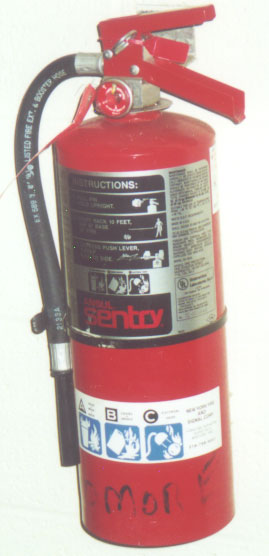| Fire
Safety, Tips, & What To
Do
Bomb
Threats
Threats
Received by Telephone
If
a Suspicious Object is Located
Suspicious
Packages
Fire Safety
The
Department of Campus Safety is responsible for coordinating all fire safety programs,
inspections, training and drills. We work closely with the Saratoga Springs Fire
Department and fire inspectors to ensure compliance with state and local laws
regarding fire safety.
back
to top
Fire Safety Tips  
- Know
the location of fire alarms and practice using
your fire exit.
- DO
NOT
tamper with fire alarms or extingiushers. (IT'S
A CRIME)
- Keep
flammable materials away from all heat sources.
- DO
NOT
overload electrical circuits.
- DO
NOT
smoke in bed.
- DO
NOT
store any highly combustible material in your
room.
- Halogen
lamps are prohibited.
- Candles,
incense and open flames are prohibited.
back
to top
What
To Do in the Event of a Fire - THINK
and DON'T PANIC.
- Keep
low to the ground where there is more fresh air.
- Feel
the door for heat. If the metal knobs or door are hot, DO
NOT OPEN THE DOOR.
Go to a window and call for help. DO
NOT JUMP FROM HEIGHTS.
Our doors and walls are fire rated to survive for a considerable amount of time.
- If
you are able to exit your room, close the door behind you, pull a fire alarm if
you pass one and go to the predetermined roll call location.
- DO
NOT use elevators
to exit a building.
back
to top
Bomb
Threats It
is important to realize that the vast majority of bomb threats are false and are
primarily used to elicit an anticipated response of panic from occupants of a
building. Therefore, upon receipt of a bomb threat it is important to remain calm
and obtain as much information as possible regarding the threat. Bomb
threats may be received in various forms such as telephone calls, letters, or
email. Any threat that is received in a physical form (such as a letter, email
or recording) must be treated as evidence and should not be handled by many people.
Law enforcement authorities may be able to trace the source of the threat. back
to top
Threats
Received by Telephone - Remain
calm and write down as much information as you can.
- Ask:
- When will the bomb explode?
- Where is it located?
- What
kind of bomb is it?
- What does it look like?
- Why are you doing
this?
- Try
to obtain the following information:
- Time/Date of call
- Exact
comments
- Recognizable characteristics (sex, age, speech, pattern, tone)
- Background
sounds
- Callers familiarity with the targeted building
After
recording this information contact the Department of Campus Safety at x5566 immediately. DO
NOT attempt to evacuate or contact the building yourself and DO NOT pull the
fire alarm. The decision to search and/or evacuate will be made by College Authority
after evaluating all available information. back
to top
If
a Suspicious Object is Located - DO
NOT touch or move the object.
- Clear
the area and prevent unauthorized people from entering.
- Immediately
contact the Deparment of Campus Safety at x5566.
back
to top
Suspicious
Packages - DO NOT attempt to open the package.
- Clear
the immediate area.
- Contact
the Department of Campus Safety immediately at x5566.
back
to top | 